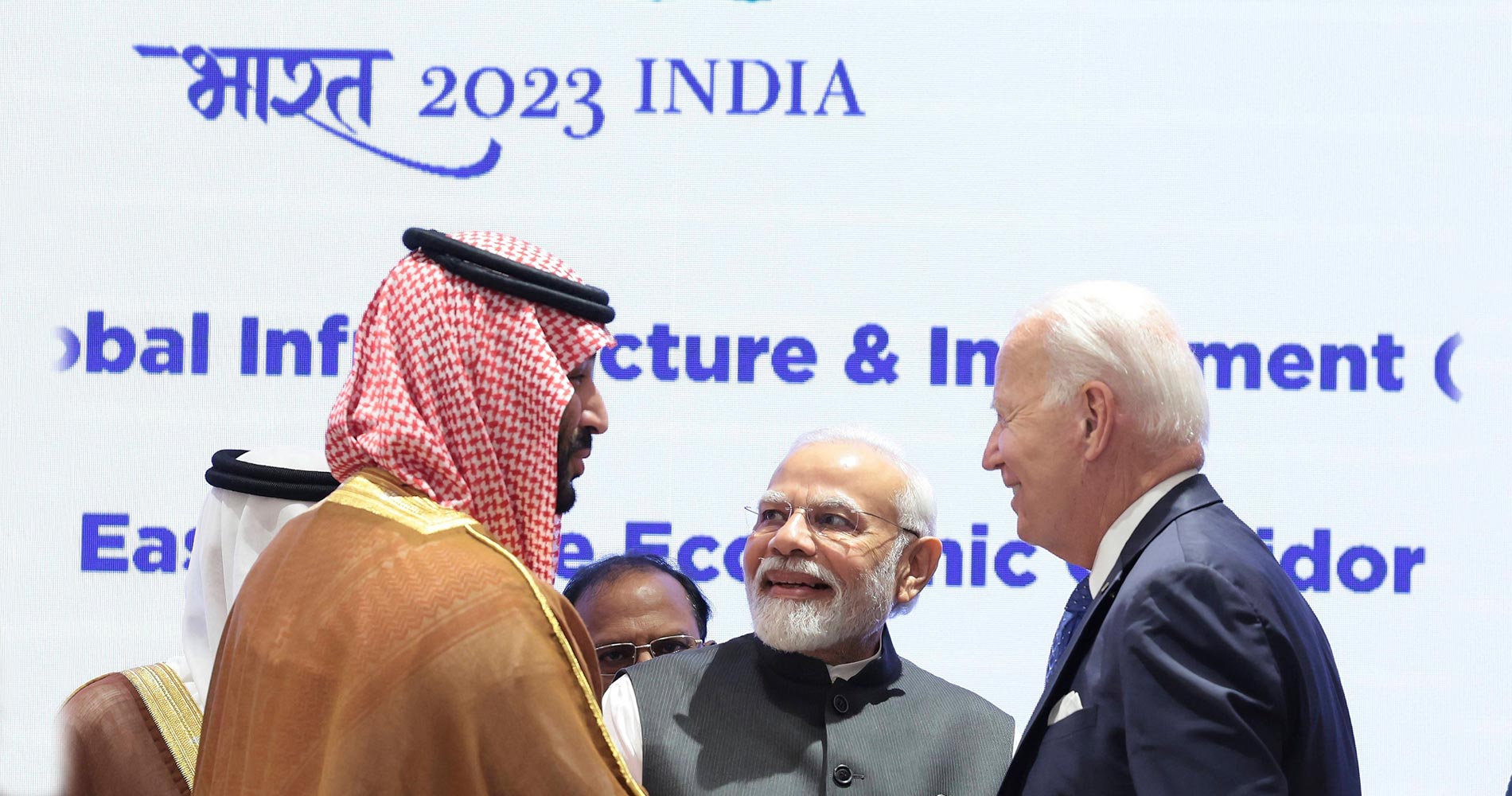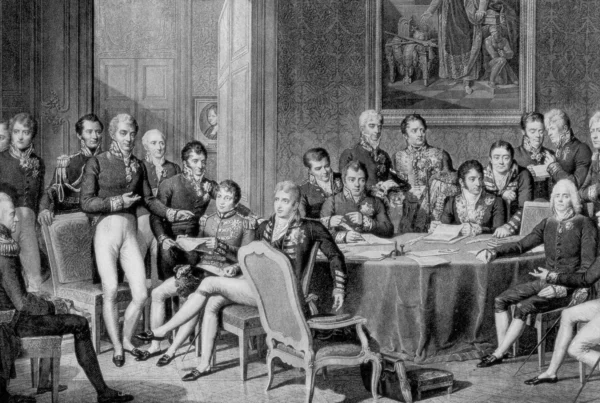Indian Prime Minister Narendra Modi recently announced a new transport corridor at the G20 summit in Delhi, which he believes will shape global trade for centuries. This India-Middle East-Europe Economic Corridor (IMEC) was unveiled by US President Joe Biden and Saudi Crown Prince Mohammed bin Salman, marking a shift in their relationship and potentially serving as a counter to China’s Belt and Road Initiative (BRI). Can IMEC truly become a game-changing project that redefines global trade dynamics?
Meric Sentuna Kalaycioglu
17 November 2023
Arabic version | Chinese version | French version | Spanish version
IMEC: India-Middle East-Europe Economic Corridor
A ground-breaking initiative known as the India-Middle East-Europe Economic Corridor (IMEC) is poised to reshape global trade and connectivity by fostering economic integration and facilitating the movement of goods and people among Asia, the Persian Gulf, and Europe. The project, initiated with the signing of a Memorandum of Understanding (MoU) on 10 September 2023 during the G20 New Delhi summit, has garnered international attention for its potential to bolster transportation and communication links on an unprecedented scale.
IMEC, which envisions a corridor from India to Europe through key countries, including the United Arab Emirates, Saudi Arabia, Jordan, Israel, and Greece, has been hailed as a strategic countermeasure to China’s Belt and Road Initiative (BRI). This ambitious economic corridor is set to employ rail and shipping networks, which will not only expedite trade but also provide an alternative to the Suez Canal.
Reactions to IMEC have been mixed. Turkish President Recep Tayyip Erdogan criticized the project for bypassing Turkey and proposed an alternative route: the “Iraq Development Road Project,” which would connect the Persian Gulf to Europe via railways and highways through ports in the United Arab Emirates, Qatar and the Grand Faw Port which is currently under construction in Iraq.
IMEC vs. China’s Belt and Road Initiative (BRI)
Since its launch in 2013, the BRI’s objectives have gradually diverged from its original vision. Rather than focusing solely on the infrastructure of logistics and transportation, Beijing expanded its interpretation of BRI to encompass a broad range of other infrastructure projects worldwide. Chinese banks offered loans for various projects, many of which ended up primarily serving Chinese commercial interests especially in Africa. African governments were the first to raise questions about the BRI’s economic rationale.
China’s debt-trap diplomacy, a term coined in 2017 by an Indian academic Brahma Chellaney, refers to the situation where China as a powerful country lends money to a less developed nation. When the recipient struggles to repay, China as the lender can leverage this debt to advance its interests, potentially impacting the recipient’s sovereignty and independence. China has faced accusations of employing debt-trap diplomacy in several countries, especially in Malaysia and Sri Lanka.
However, it is essential to recognize that the BRI projects were initiated by the recipient governments for their own agendas and for the benefit of the local elite. China’s development financing system is characterized by loose coordination and weak regulation because of diverse funding sources, limited transparency and a prioritization of commercial and strategic interests. This, combined with corruption and lack of due diligence in the recipient country, frequently produces poor results at significant expense, resulting in a backlash against China.
In response to waning interest in further infrastructure projects, China appears to be shifting the BRI’s focus towards helping developing countries industrialize by financing factories and industrial facilities. While this move may address some concerns of the host countries receiving BRI investment, it could also have unintended consequences, such as increased competition with Chinese goods in the global market.
The latest Belt and Road Forum in October 2023 in China saw a decline in high-level attendance, especially from Europe. The geopolitical implications of the BRI, exacerbated by Beijing’s alignment with Moscow in the Russia-Ukraine conflict, suggest a shift in European countries’ perceptions of China’s intentions.
A recent study published in 2023 by a group of organizations, including the World Bank and Harvard Kennedy School, found that China spent roughly USD 240 billion between 2008 and 2021 to assist 22 developing countries facing difficulties in repaying loans taken for BRI infrastructure projects. About 80% of this bailout money was spent between 2016 to 2021, primarily benefiting middle-income countries such as Argentina, Pakistan and Egypt. The study showed that BRI projects have decreased since 2016, partly owing to underperforming projects.
Can IMEC compete with BRI?
Comparing IMEC to the BRI, shows that the BRI’s grand ambitions have waned, with lending for projects having slowed, underperformance of infrastructure projects, and countries such as Italy expressing a desire to withdraw because of concerns about lack of transparency.
While IMEC is seen as a response to the BRI, it is deemed less ambitious and unlikely to be a game-changer on the scale of the BRI. China’s decade-long head start, coupled with its substantial investments, have expanded the BRI’s reach to over 150 countries. Moreover, IMEC faces competition from the Suez Canal, an integral part of the BRI, which is currently offering cheaper and faster transport by sea.
Despite these challenges, IMEC aims to encompass more than just trade and services to include sectors such as electricity infrastructure and cybersecurity. These sectors could align with or compete against the BRI. However, IMEC’s ability to act as a competitor to the BRI’s influence depends on factors such as the scope and scale of projects, the size and availability of funding, international support and, most importantly, geopolitical and regional realities.
As IMEC gains momentum, it has the potential to transform global trade routes, but must deal with obstacles to its realization. The future of this economic corridor will undoubtedly be closely watched by governments and businesses around the world.







